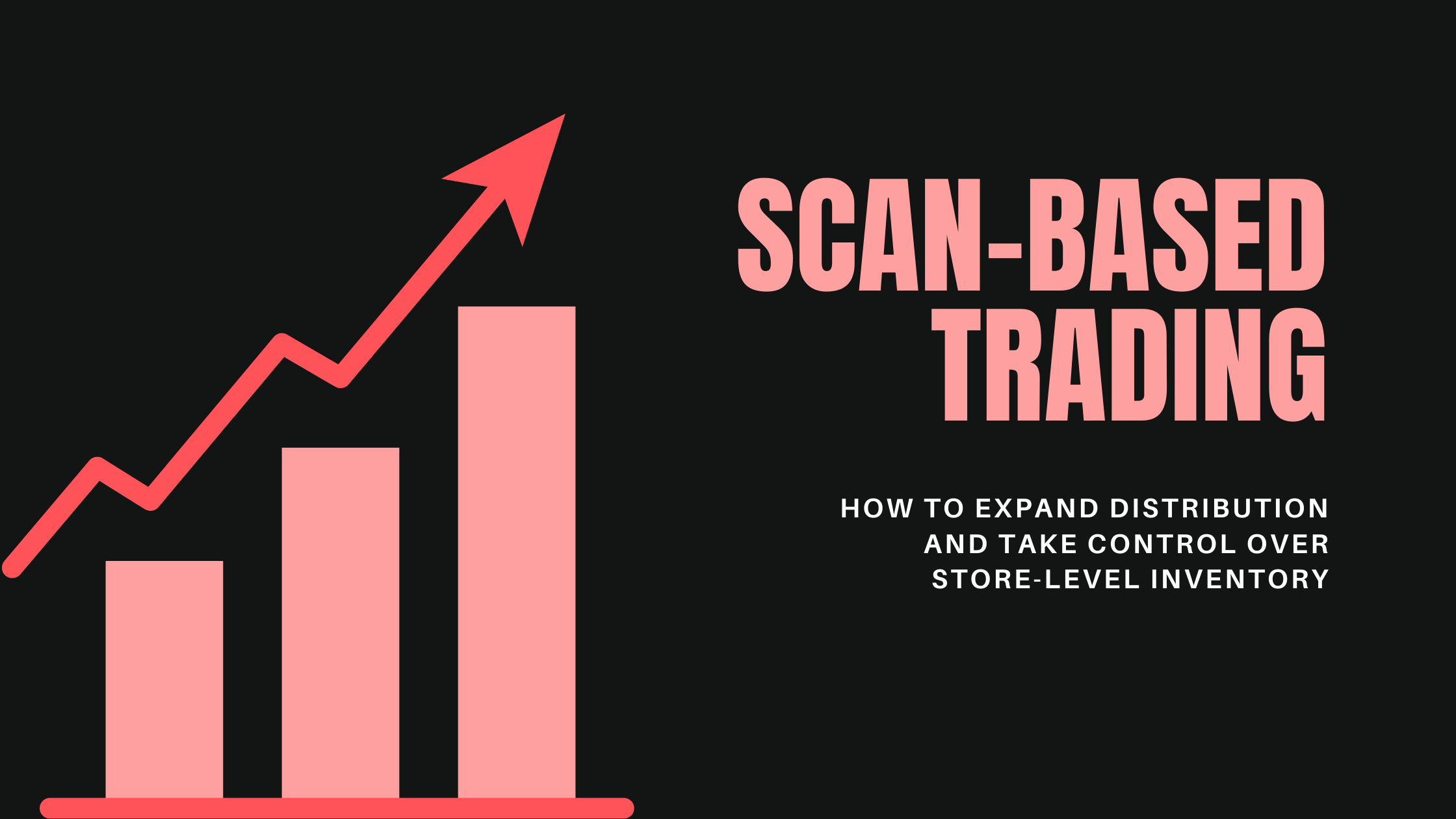Suppliers are embracing scan-based trading (SBT) as a way to open retail doors and take more control over their store-level inventory. These programs allow suppliers to be more flexible and agile, which can reap large benefits to their profit margin. Read on to learn what scan-based trading is, how it can expand distribution, how it empowers store-level inventory control, and what suppliers need to know before adopting it.
What is Scan-Based Trading?
There are two primary types of retail trading: traditional and scan-based.
In traditional trading, inventory is owned by retailers. But in scan-based trading, it’s owned by the supplier until the point of sale (POS) where it passes to the retailer, who sells it to the customer.
The two main benefits of scan-based trading, though there certainly are more, are that suppliers are able to get more information about store-level activities and have more control over their store-level inventory.
How Does Scan-Based Trading Expand Distribution?
Retailers love scan-based trading because it minimizes their risk. They don’t own the inventory until it’s already sold. This is in stark contrast to traditional trading where the purchase of inventory is negotiated upfront and the retailer owns the goods in their store. This shift, while unimportant to the consumer, can make all the difference for suppliers.
For one thing, less risk for retailers means they’re more likely to say “yes” to new products and new supplier relationships. Why not try out new products that you could turn a profit on, without any of the risk? Of course, that’s not to say every retailer will open their doors wide for any scan-based trading supplier. There are still hurdles that will need to be overcome, like brand fit, category fit, and negotiations. But. With less financial risk, one enormous hurdle disappears.
Then, there are the inventory shrink costs. In the traditional model, the retailer will be responsible for all costs associated with shrinkage, as they are responsible for all aspects of inventory management. However, in scan-based trading, the shrink costs are shared. Exactly what the split should be is figured out during contract negotiations.
How Does Scan-Based Trading Help Suppliers Take Control of Inventory?
The other big win for scan-based trading is more inventory control. There are two big parts of this: better distribution management and the ability for suppliers to create their own planograms.
- Distribution Management – Under scan-based trading, suppliers are able to stock products based on customer demand, which allows a much higher level of accuracy and flexibility. It also has the huge benefit of allowing suppliers to take risks and distribute more or less inventory to specific store locations based on data and metrics they have beyond the algorithms of retail supply chain systems.
- Planograms – At the store level itself, it’s worth highlighting the higher degree of control over planograms. Under traditional models, the retailer is responsible for planograms. Under scan-based trading, suppliers have control and also a much higher degree of insight over what’s working and what’s not.
Before You Jump In
While there are many benefits of scan-based trading, it’s worth noting three areas to pay attention to when you start down the path.
- Negotiations – Not that there aren’t negotiations under traditional trading but it is worth highlighting its role in scan-based trading. Be sure to consider your needs and prepare for negotiations to ensure that you’ll be able to meet your profit goals. There is some research that retail bargaining power is slightly elevated under SBT, so go in with eyes wide open and you’ll walk out with what you need.
- Level of Risk – Under scan-based trading, you do assume more risk because you will continue owning your inventory until the POS. This can be mitigated by the next point: know how to keep an eye on things and the extra risk will not be a significant challenge.
- Keeping an Eye on Things – Because you have more control over your store-level inventory, naturally you’ll want to make sure you’re keeping a closer eye on it. This will help prevent and minimize inaccurate inventory, supply chain delays, overstocks, and out of stocks.
Making Scan-Based Trading Work for You
There’s one surefire way to make sure scan-based trading will work for you: have the right team in place. Maybe you already have all the skills you need on your internal team. In which case, great!
If you’re not sure, consider ensuring that these functions are in place and top-notch when implementing your scan-based trading program:
- Visual Merchandiser – someone who can make sure your planograms are created in a way that’s appealing to customers and isn’t overstocked, a typical fatal flow that non-merchandisers can make.
- Inventory Manager – someone who’s an expert at supply chain, a data analysis wizard that makes inventory flow like a well-written piece of music. Best-in-class inventory management is the piece that can make a highly successful and profitable program.
- Retail Merchandiser – a third-party that are your boots on the ground inside the retail stores. They make sure your product gets to the sales floor, is set correctly, looks engaging, manages your in-store marketing, and pulls off your product transitions flawlessly.
Scan-based trading is a powerful tool that suppliers should consider adding to their retail toolbox. Before adopting it, be sure to consider the costs, changes to internal processes, and the oversight needed to make it a success. After implementing it, be sure to stay on top of the incoming data to make more strategic decisions about your inventory and ultimately, drive more sales.
Curious about how to implement scan-based trading? Contact us today!

